| |
Dual approach to HIV-1 cure: Activation of latency and restoration of exhausted virus-specific T cell function
|
| |
| |
6th Intl Workshop on HIV Persistance during Therapy Report Summary - Report by David Margolis MD, UNC Chapel Hill and the Collaboratory of AIDS Researchers for Eradication (CARE) - (12/15/13)
Reported by Jules Levin
Stephen Mason
Director, Discovery Virology
Bristol-Myers Squibb
6th HIV Persistence Workshop
Miami, December 5, 2013
PROGRAM ABSTRACT:
Dual Approach to HIV-1 Cure: Activation of Latency and Restoration of Exhausted Virus-specific T Cell Function
S Mason1, D Tenney1, S. Balsitis1, B Rose1, S Levine1, S Campellone1, M Wichroski1, C Mazzucco1, A Walsh1, A Sheaffer1, G Hanna2, C Hwang3, D Grasela3, M Cockett1, D Gardiner3, and J Whitney4Bristol-Myers Squibb Co. Research & Development: 1Discovery Virology, Wallingford, CT, USA; 2Global Clinical Research-Virology, Princeton, NJ, USA; 3Discovery Medicine-Virology, Hopewell, NJ, USA; 4Center for Virology and Vaccine Research, Beth Israel Deaconess Medical Center, Harvard Medical School, Boston, MA, USA
BACKGROUND: The persistence of HIV-1 infection in patients suppressed by combination antiretroviral therapy (cART) is due to the presence of latent reservoir(s), including that within resting CD4+ T cells. An additional factor in persistence is the dysfunction of HIV-1-specific T-cells in infected individuals. Thus, elimination of the latent HIV-1 reservoir may require a therapeutic strategy that incorporates a combination of activation of latent HIV-1 virus as well as restoration of HIV-specific T-cell responses.
METHODS & RESULTS: We have developed multiple assays for identification of compounds that reactivate latent HIV-1. These assays involve an integrated and quiescent HIV-1 LTR-reporter present in both primary T cells and immortalized T cell lines. A parallel screening approach was employed. Triage of the hits from these screens has revealed compounds capable of activating latent HIV-1 reporters and virus in multiple contexts.The ability of immunomodulatory therapies to affect human chronic viral infections also is being investigated with in vitro assays, in animal models and in clinical trials. As proof of concept, nivolumab (anti-PD-1; BMS-936558) has been tested in the context of chronic HCV in human subjects. A minority of subjects experienced a significant virologic response. Additionally, BMS-936559 (anti-PD-L1) has been administered to SIV-infected rhesus macaques that were suppressed on a combination of antiretrovirals (ARVs). Repeat dosing with anti-PD-L1 appears to be well tolerated and, in some animals, affects SIV rebound after cessation of ARVs.
CONCLUSIONS: We hypothesize that a combination of approaches will be necessary for reduction of the HIV-1 reservoir leading to a complete eradication of latent virus or functional cure. To this end, we have developed a dual approach to discover agents with complementary mechanisms of action that, in combination, may eradicate latent HIV-1 infection. Future studies will be directed at investigating these combinations.
SUMMARY-
---------------------------------------


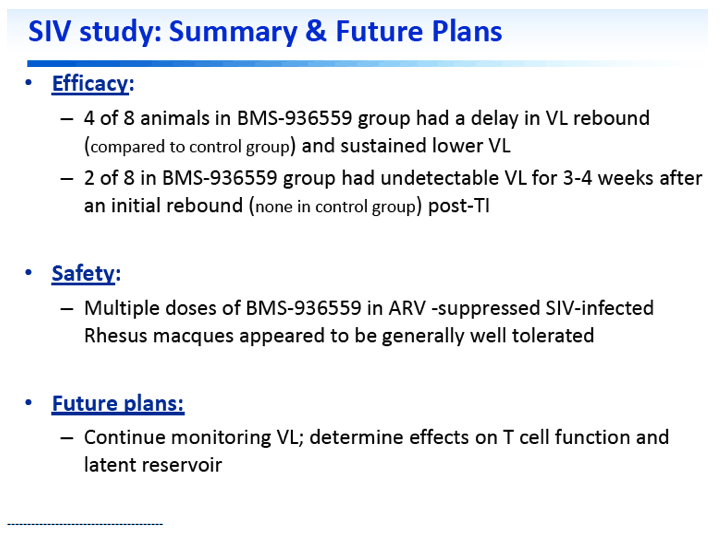
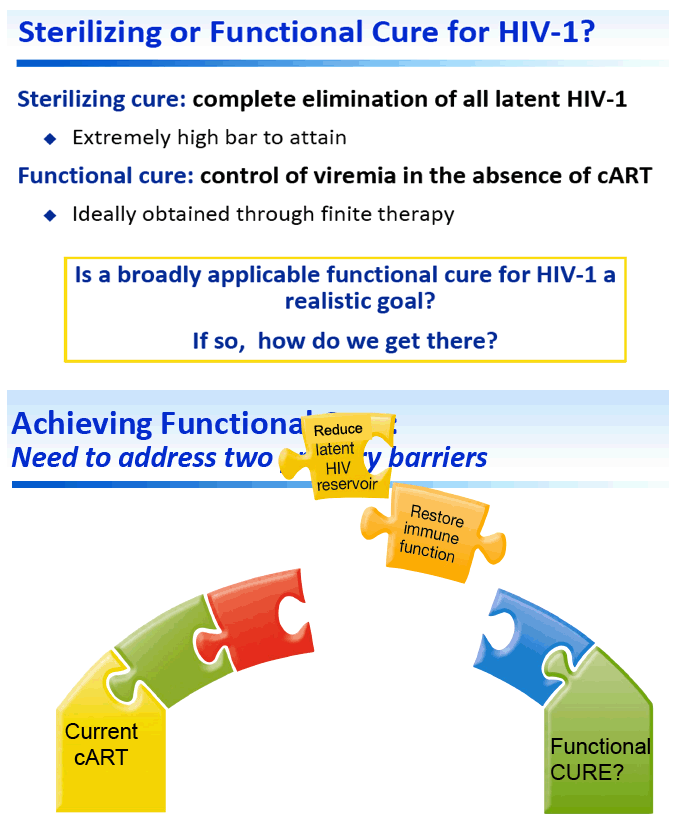
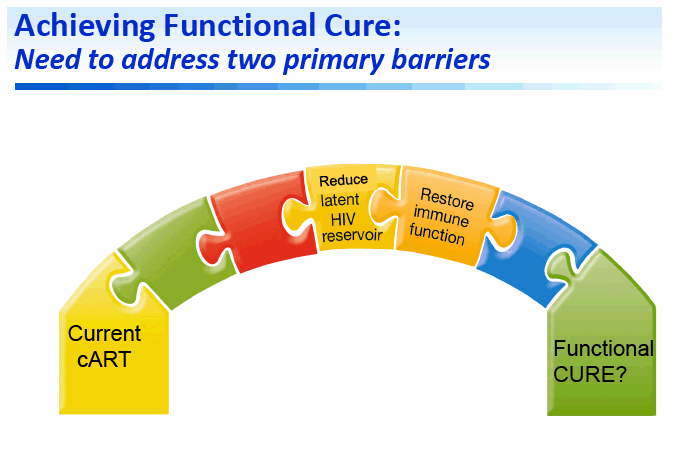
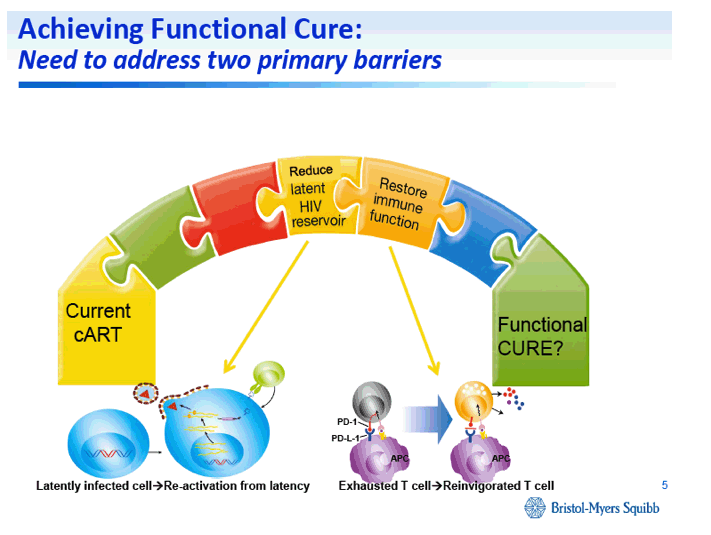
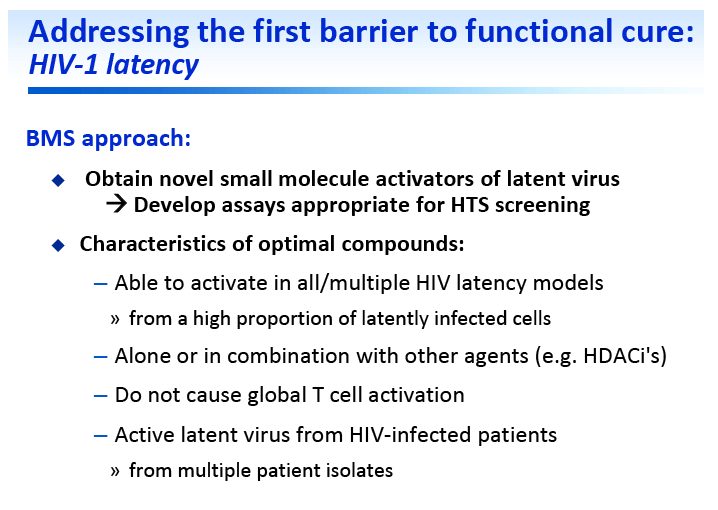

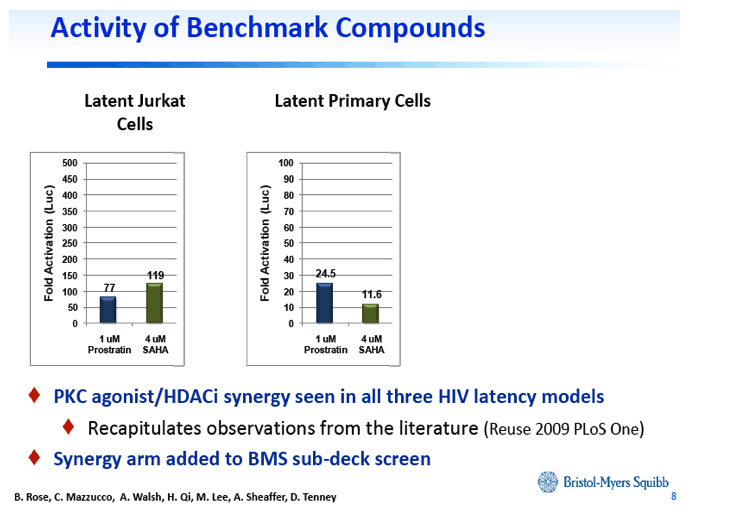


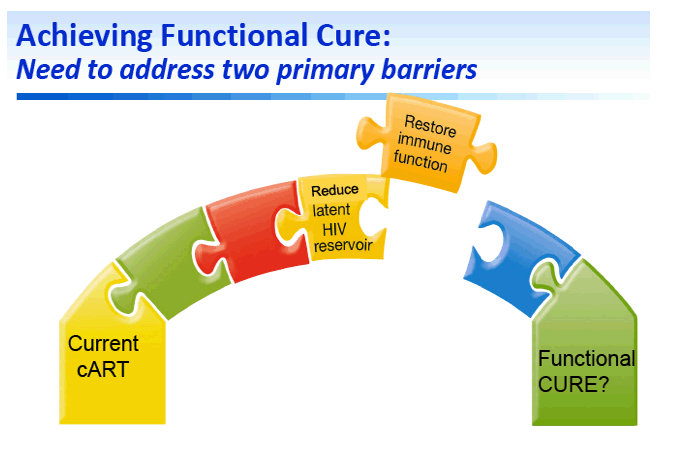
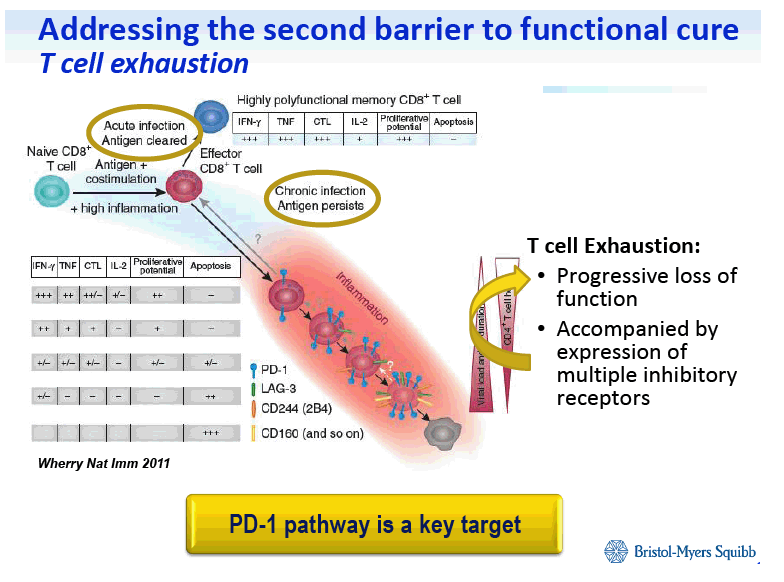
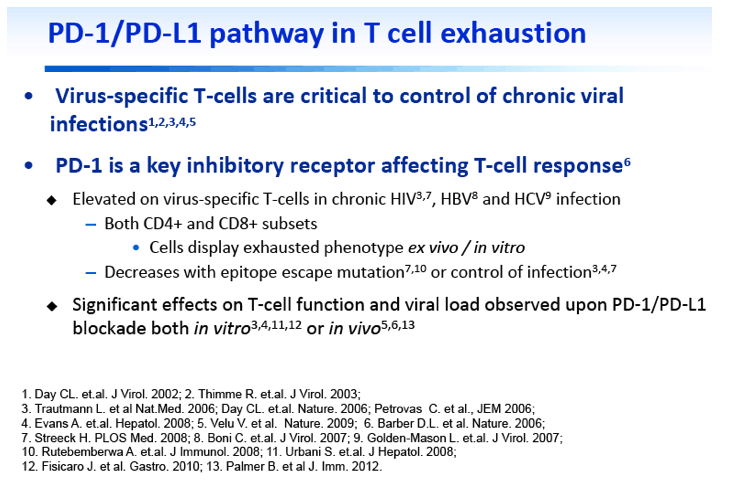

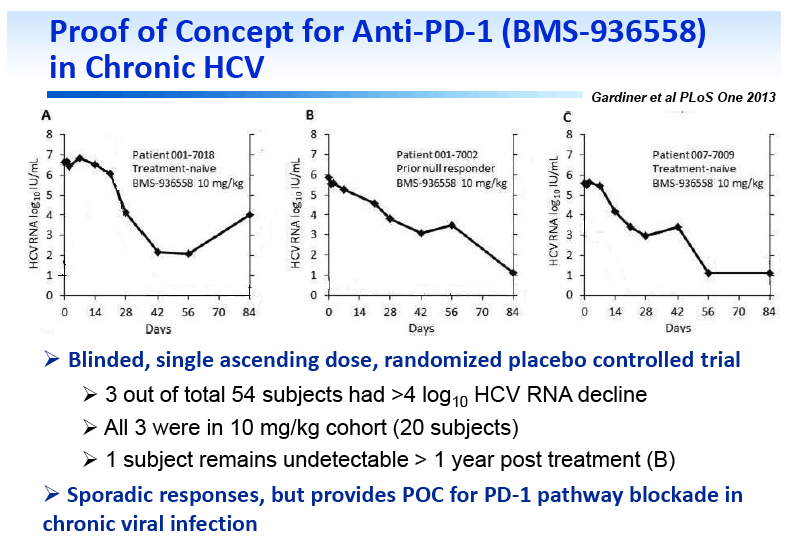
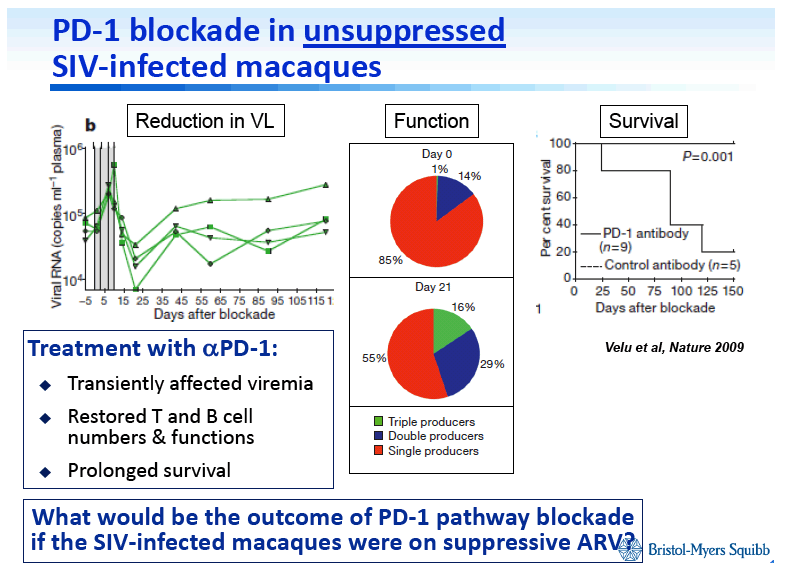
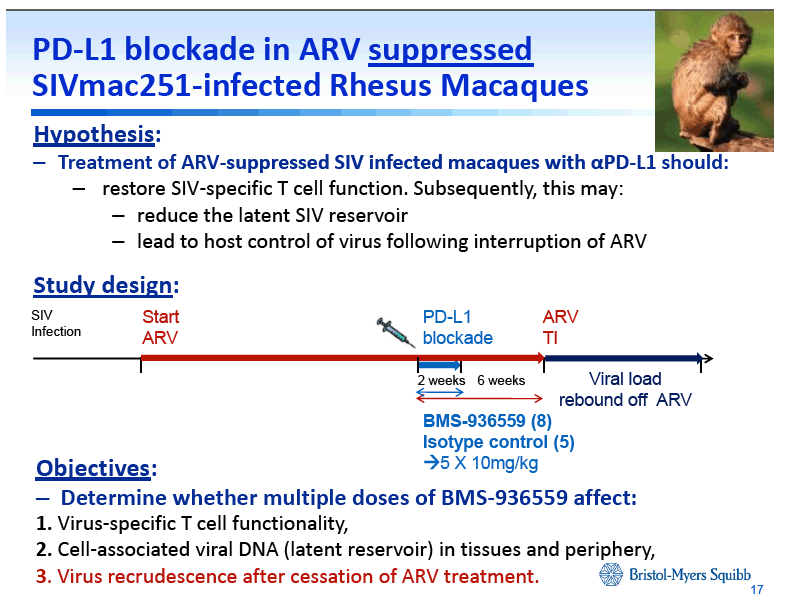
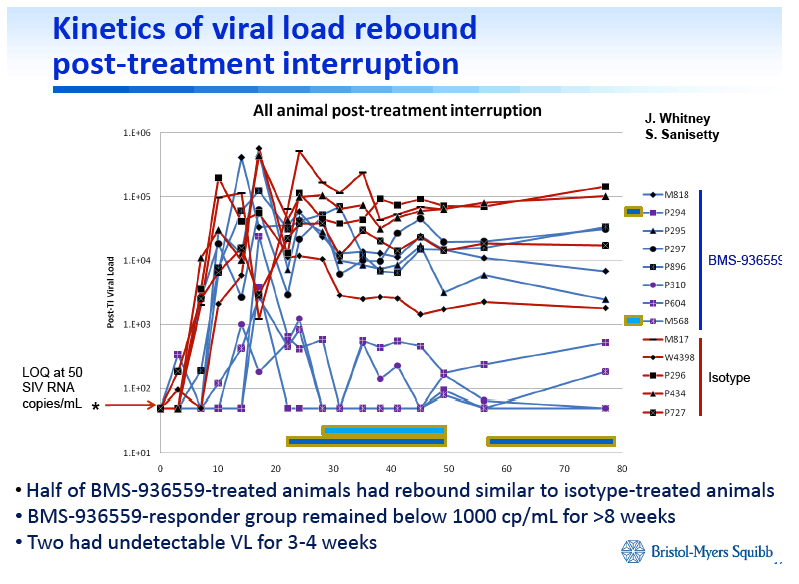
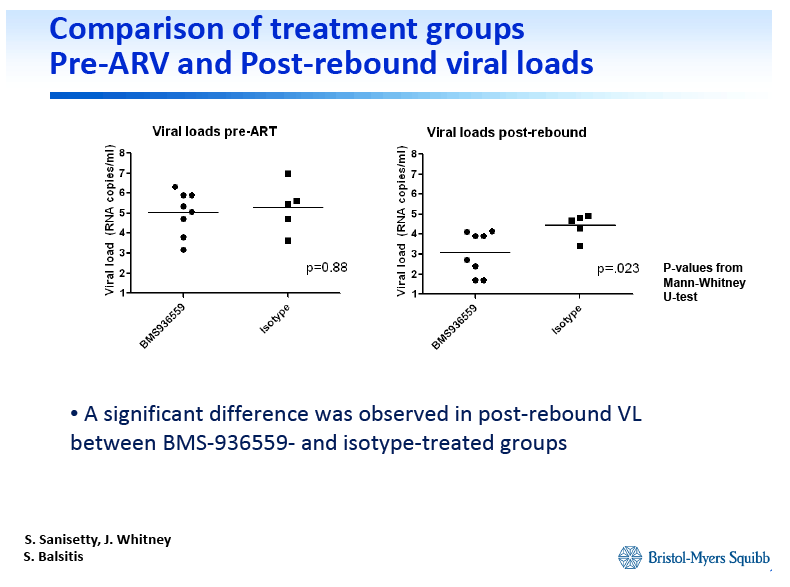

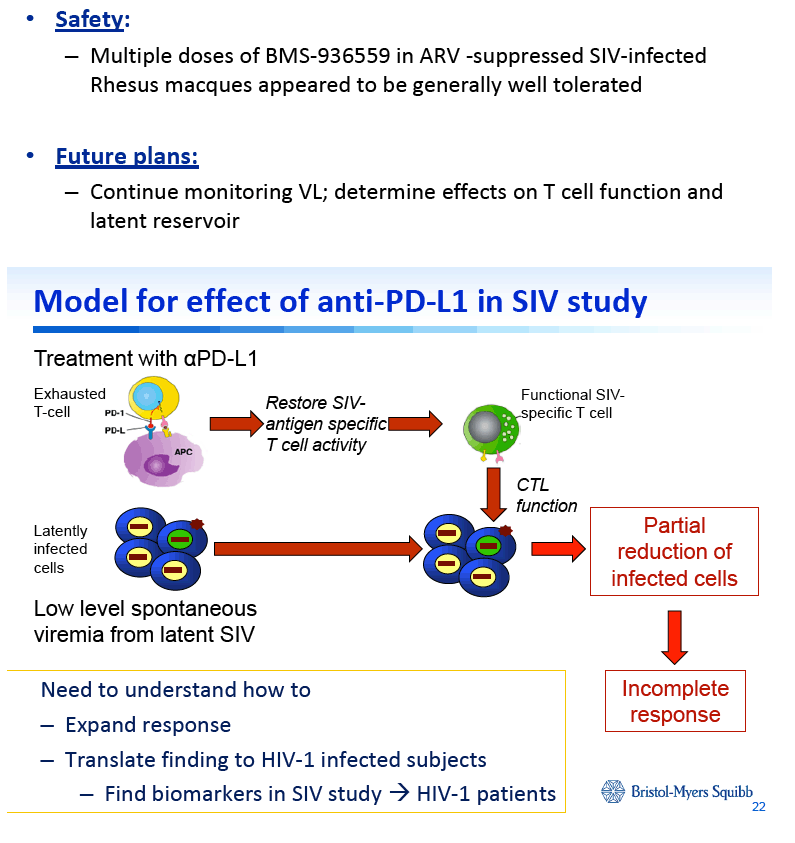
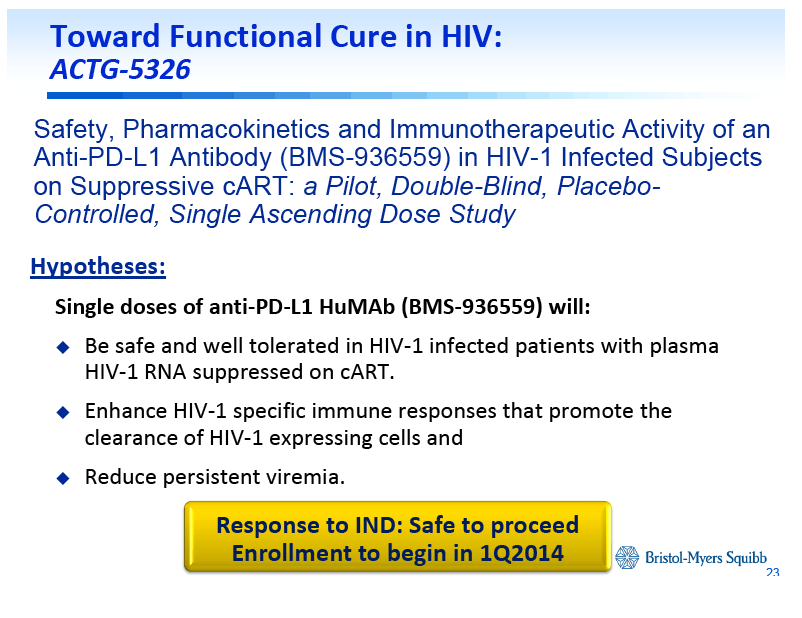
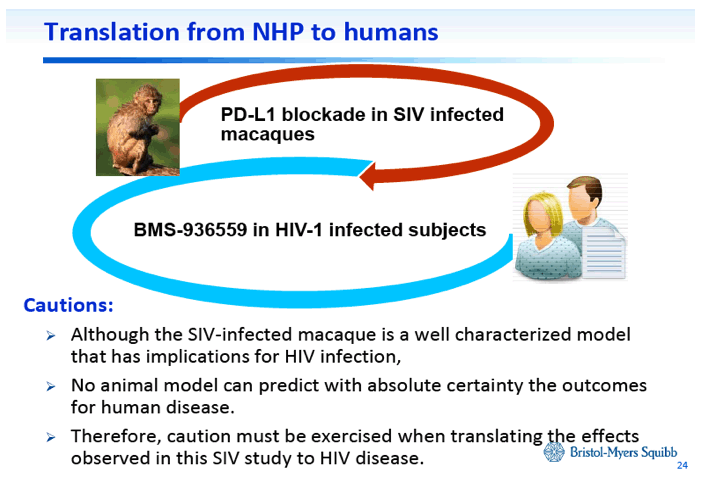
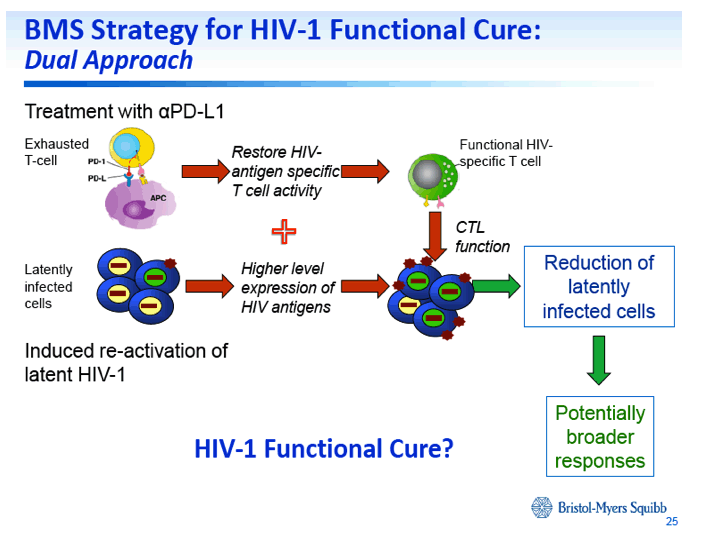
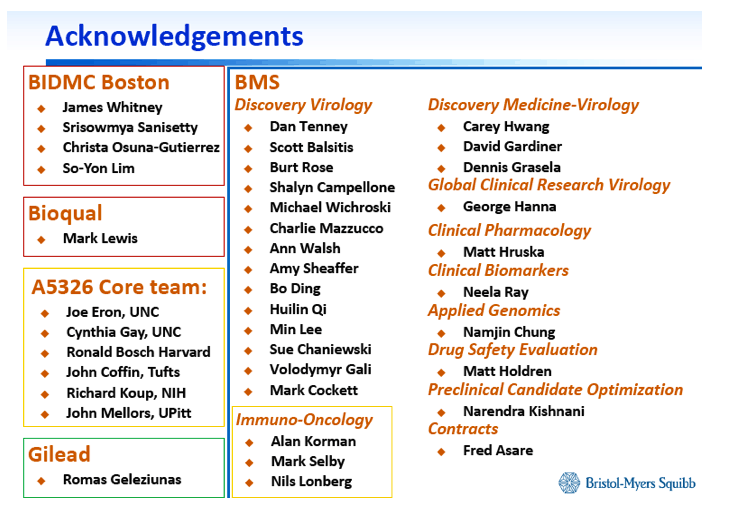
|
|
| |
| |
|
|
|